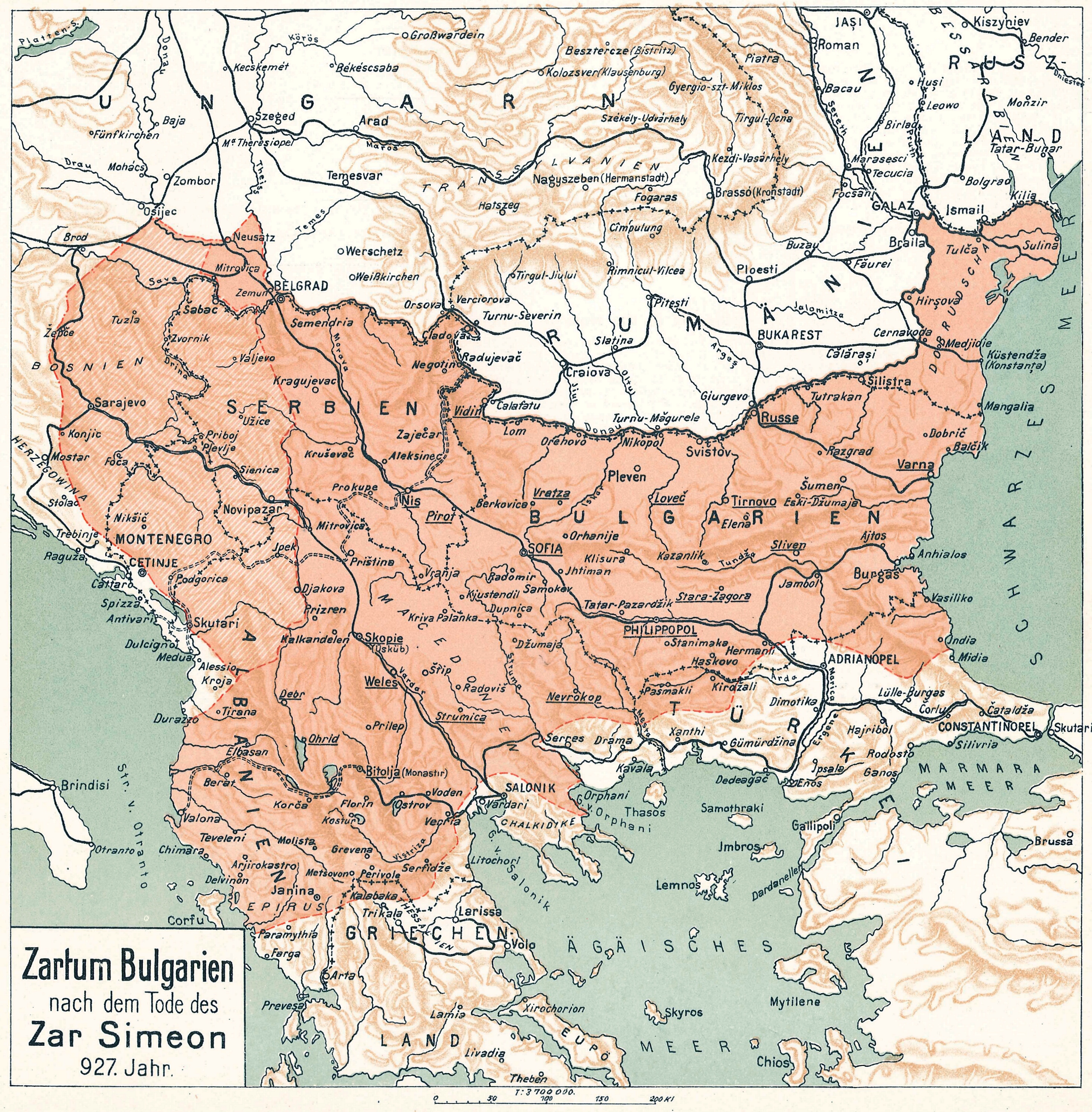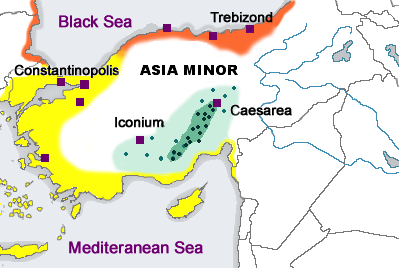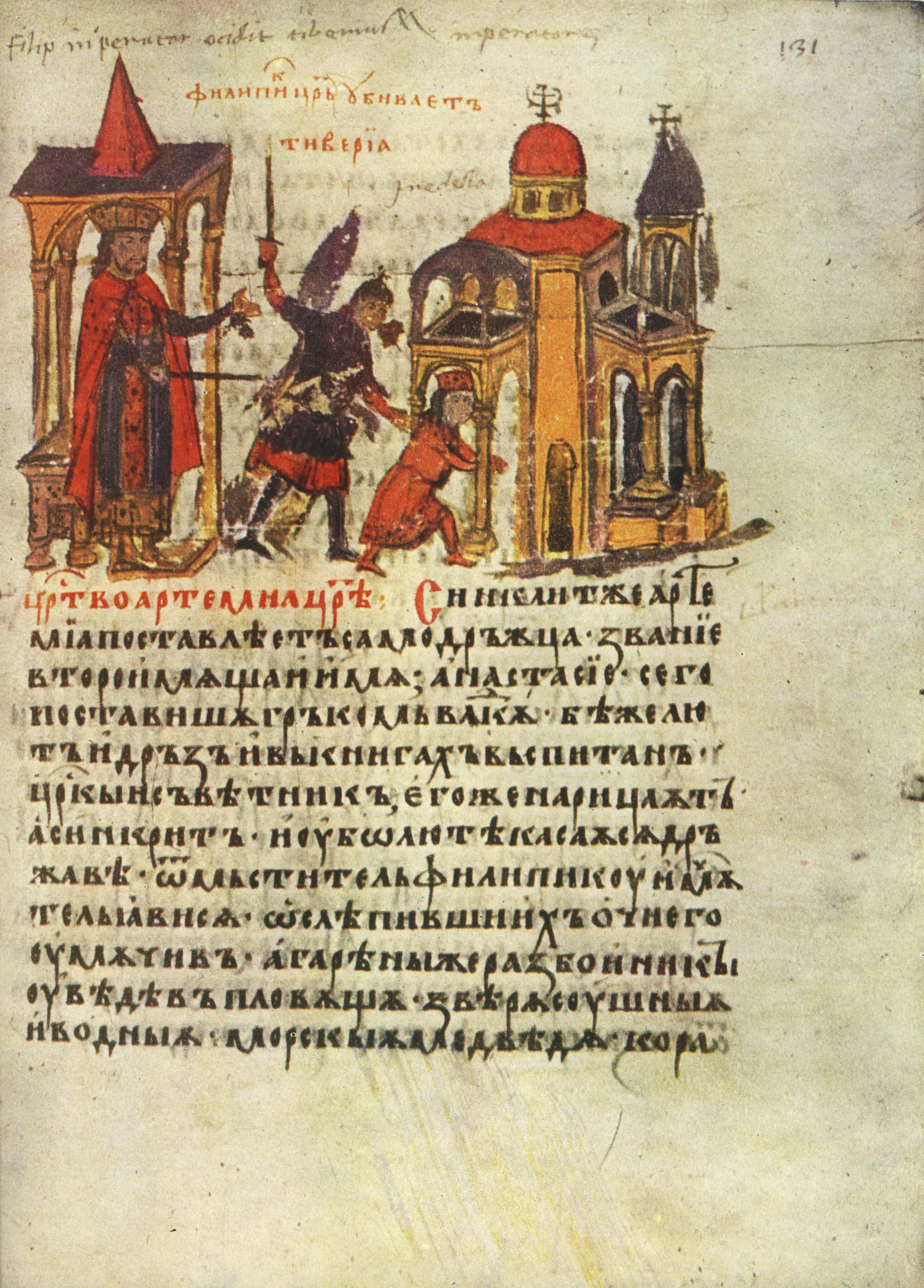|
Czar
Tsar (; also spelled ''czar'', ''tzar'', or ''csar''; ; ; sr-Cyrl-Latn, цар, car) is a title historically used by Slavic monarchs. The term is derived from the Latin word '' caesar'', which was intended to mean ''emperor'' in the European medieval sense of the term—a ruler with the same rank as a Roman emperor, holding it by the approval of another emperor or a supreme ecclesiastical official—but was usually considered by Western Europeans to be equivalent to "king". Tsar and its variants were the official titles in the First Bulgarian Empire (681–1018), Second Bulgarian Empire (1185–1396), the Kingdom of Bulgaria (1908–1946), the Serbian Empire (1346–1371), and the Tsardom of Russia (1547–1721). The first ruler to adopt the title ''tsar'' was Simeon I of Bulgaria. Simeon II, the last tsar of Bulgaria, is the last person to have held this title. Meaning in Slavic languages The title tsar is derived from the Latin title for the Roman emperors, ''caesar' ... [...More Info...] [...Related Items...] OR: [Wikipedia] [Google] [Baidu] |
Peter The Great
Peter I (, ; – ), better known as Peter the Great, was the Sovereign, Tsar and Grand Prince of all Russia, Tsar of all Russia from 1682 and the first Emperor of Russia, Emperor of all Russia from 1721 until his death in 1725. He reigned jointly with his half-brother Ivan V of Russia, Ivan V until 1696. From this year, Peter was an Absolute monarchy, absolute monarch, an autocrat who remained the ultimate authority and organized a well-ordered police state. Much of Peter's reign was consumed by lengthy wars against the Ottoman Empire, Ottoman and Swedish Empire, Swedish empires. His Azov campaigns were followed by the foundation of the Imperial Russian Navy, Russian Navy; after his victory in the Great Northern War, Russia annexed a Treaty of Nystad, significant portion of the eastern Baltic Sea, Baltic coastline and was officially renamed from a Tsardom of Russia, tsardom to an Russian Empire, empire. Peter led a cultural revolution that replaced some of the traditionalist ... [...More Info...] [...Related Items...] OR: [Wikipedia] [Google] [Baidu] |
Simeon II Of Bulgaria
Simeon Borisov Saxe-Coburg-Gotha (, ; born 16 June 1937) is a Bulgarian politician who reigned as the last Tsar of the Tsardom of Bulgaria as Simeon II from 1943 until 1946. In 1946, the monarchy was abolished by a referendum, forcing Simeon into exile. Following the fall of communism in Bulgaria, Simeon returned to his home country in 1996, and founded the National Movement for Stability and Progress party (also known as the National Movement Simeon II party). After winning the 2001 election as its leader, Simeon proceeded to govern Bulgaria as prime minister of the Republic of Bulgaria from 2001 to 2005. Simeon was six years old when his father Boris III of Bulgaria died in 1943. Royal power was exercised on his behalf by a regency council led by Simeon's uncle Kiril, Prince of Preslav, General Nikola Mihov and prime minister, Bogdan Filov. Following his premiership from 2001 to 2005, in the next election, as leader of NDSV, Simeon entered a coalition government wi ... [...More Info...] [...Related Items...] OR: [Wikipedia] [Google] [Baidu] |
Simeon Saxe-Coburg-Gotha
Simeon Borisov Saxe-Coburg-Gotha (, ; born 16 June 1937) is a Bulgarian politician who reigned as the last Tsar of the Kingdom of Bulgaria, Tsardom of Bulgaria as Simeon II from 1943 until 1946. In 1946, the monarchy was abolished by a 1946 Bulgarian republic referendum, referendum, forcing Simeon into exile. Following the fall of communism in Bulgaria, Simeon returned to his home country in 1996, and founded the NDSV, National Movement for Stability and Progress party (also known as the National Movement Simeon II party). After winning the 2001 Bulgarian parliamentary election, 2001 election as its leader, Simeon proceeded to govern Bulgaria as Prime Minister of Bulgaria, prime minister of the Bulgaria, Republic of Bulgaria from 2001 to 2005. Simeon was six years old when his father Boris III of Bulgaria died in 1943. Royal power was exercised on his behalf by a regency council led by Simeon's uncle Kiril, Prince of Preslav, General Nikola Mihov and prime minister, Bogdan Filo ... [...More Info...] [...Related Items...] OR: [Wikipedia] [Google] [Baidu] |
Car Simeon Bulharsky - Alfons Mucha
A car, or an automobile, is a motor vehicle with wheels. Most definitions of cars state that they run primarily on roads, Car seat, seat one to eight people, have four wheels, and mainly transport private transport#Personal transport, people rather than cargo. There are around one billion cars in use worldwide. The French inventor Nicolas-Joseph Cugnot built the first steam-powered road vehicle in 1769, while the Swiss inventor François Isaac de Rivaz designed and constructed the first internal combustion-powered automobile in 1808. The modern car—a practical, marketable automobile for everyday use—was invented in 1886, when the German inventor Carl Benz patented his Benz Patent-Motorwagen. Commercial cars became widely available during the 20th century. The 1901 Oldsmobile Curved Dash and the 1908 Ford Model T, both American cars, are widely considered the first mass-produced and mass-affordable cars, respectively. Cars were rapidly adopted in the US, where they replac ... [...More Info...] [...Related Items...] OR: [Wikipedia] [Google] [Baidu] |
Simeon I Of Bulgaria
Simeon I the Great (; ; ) ruled over Bulgaria from 893 to 927,Lalkov, ''Rulers of Bulgaria'', pp. 23–25. during the First Bulgarian Empire. Simeon's successful campaigns against the Byzantines, Magyars and Serbs led Bulgaria to its greatest territorial expansion ever, making it the most powerful state in contemporary Eastern and Southeast Europe. His reign was also a period of unmatched cultural prosperity and enlightenment later deemed the Golden Age of Bulgarian culture. During Simeon's rule, Bulgaria spread over a territory between the Aegean, the Adriatic and the Black seas.Bakalov, ''Istorija na Bǎlgarija'', "Simeon I Veliki". The newly independent Bulgarian Orthodox Church became the first new patriarchate besides the Pentarchy, and Bulgarian Glagolitic and Cyrillic translations of Christian texts spread all over the Slavic world of the time. It was at the Preslav Literary School in the 890s that the Cyrillic alphabet was developed. [...More Info...] [...Related Items...] OR: [Wikipedia] [Google] [Baidu] |
Patriarch Of Constantinople
The ecumenical patriarch of Constantinople () is the archbishop of Constantinople and (first among equals) among the heads of the several autocephalous churches that comprise the Eastern Orthodox Church. The ecumenical patriarch is regarded as the representative and spiritual leader of the Eastern Orthodox Christians worldwide. The term ''ecumenical'' in the title is a historical reference to the Ecumene, a Greek designation for the civilised world, i.e. the Roman Empire, and it stems from Canon 28 of the Council of Chalcedon. The patriarch's see, the Ecumenical Patriarchate of Constantinople, is one of the most enduring institutions in the world and has had a prominent part in world history. The ecumenical patriarchs in ancient times helped in the spread of Christianity and the resolution of various doctrinal disputes. In the Middle Ages, they played a major role in the affairs of the Eastern Orthodox Church, as well as in the politics of the Orthodox world, and in spreadi ... [...More Info...] [...Related Items...] OR: [Wikipedia] [Google] [Baidu] |
Byzantine Greek
Medieval Greek (also known as Middle Greek, Byzantine Greek, or Romaic; Greek: ) is the stage of the Greek language between the end of classical antiquity in the 5th–6th centuries and the end of the Middle Ages, conventionally dated to the Fall of Constantinople, Ottoman conquest of Constantinople in 1453. From the 7th century onwards, Greek was the only language of administration and government in the Byzantine Empire. This stage of language is thus described as Byzantine Greek. The study of the Medieval Greek language and literature is a branch of Byzantine studies, the study of the history and culture of the Byzantine Empire. The conquests of Alexander the Great, and the ensuing Hellenistic period, had caused Greek to spread throughout Anatolia and the Eastern Mediterranean. The beginning of Medieval Greek is occasionally dated back to as early as the 4th century, either to 330 AD, when the political centre of the Roman Empire was moved to Constantinople, or to 395&n ... [...More Info...] [...Related Items...] OR: [Wikipedia] [Google] [Baidu] |
Christianization Of Bulgaria
The Christianization of Bulgaria was the process by which 9th-century medieval Bulgaria converted to Christianity. It reflected the need of unity within the religiously divided Bulgarian state as well as the need for equal acceptance on the international stage in Christian Europe. This process was characterized by the shifting political alliances of Boris I of Bulgaria (ruled 852–889) with the kingdom of the East Franks and with the Byzantine Empire, as well as his diplomatic correspondence with the Pope. Because of Bulgaria's strategic position, the churches of both Rome and Constantinople each wanted Bulgaria in their sphere of influence. They regarded Christianization as a means of integrating Slavs into their region. After some overtures to each side, the Khan adopted Christianity from Constantinople in 870. As a result, he achieved his goal of gaining an independent Bulgarian national church and having an archbishop appointed to head it. Background When Khan Boris ... [...More Info...] [...Related Items...] OR: [Wikipedia] [Google] [Baidu] |
Boris I
Boris I (also ''Bogoris''), venerated as Saint Boris I (Mihail) the Baptizer (, ; died 2 May 907), was the ruler (knyaz) of the First Bulgarian Empire from 852 to 889. Despite a number of military setbacks, the reign of Boris I was marked with significant events that shaped Bulgarian and European history. With the Christianization of Bulgaria in 864, paganism was abolished. A skillful diplomat, Boris I successfully exploited the conflict between the Patriarchate of Constantinople and the Papacy to secure an autocephalous Bulgarian Church, thus dealing with the nobility's concerns about Byzantine interference in Bulgaria's internal affairs. When in 885 the disciples of Saints Cyril and Methodius were banished from Great Moravia, Boris I gave them refuge and provided assistance which saved the Glagolithic and later promoted the development of the Cyrillic script in Preslav and the Slavic literature. After he abdicated in 889, his eldest son and successor tried to restore the ... [...More Info...] [...Related Items...] OR: [Wikipedia] [Google] [Baidu] |
Kanasubigi
Kanasubigi (), possibly read as ''Kanas Ubigi'' or ''Kanas U Bigi'', was a title of the early Bulgar rulers of the First Bulgarian Empire. Omurtag (814–831) and his son Malamir (831–836) are mentioned in inscriptions as Kanasubigi. The title '' khan'' for early Bulgarian rulers is an assumed one, as only the form ''kanasubigi'' or "kanasybigi" is attested in stone inscriptions. Historians presume that it includes the title '' khan'' in its archaic form ''kana'', and there is a presumptive evidence suggesting that the latter title was indeed used in Bulgaria, e.g. the name of one of the Bulgars' ruler Pagan occurs in Patriarch Nicephorus's so-called breviarium as (''Kampaganos''), likely an erroneous rendition of the phrase "Khan Pagan". Among the proposed translations for the phrase ''kanasubigi'' as a whole are ''lord of the army'', from the reconstructed Turkic phrase ''*sü begi'', paralleling the attested Old Turkic ''sü baši'', and, more recently, "(ruler) from Go ... [...More Info...] [...Related Items...] OR: [Wikipedia] [Google] [Baidu] |
Tervel Of Bulgaria
Caesar Tervel (), also called Tarvel, Terval, or Terbelis in Byzantine Empire, Byzantine sources, was the ruler Caesar (title), Caesar of History of Bulgaria, Bulgaria during the First Bulgarian Empire at the beginning of the 8th century. In 705 Emperor Justinian II named him Caesar (title), caesar, the first foreigner to receive this title.Хан Тервел – тема за кандидат студенти He was raised a pagan like his grandfather Khan (title), Khan Kubrat,s:История славянобългарска, „История славянобългарска“, св.Паисий Хилендарски, 18 век."Българите", докум. филм, реж. и сценарист П. П� ... [...More Info...] [...Related Items...] OR: [Wikipedia] [Google] [Baidu] |
Justinian II
Justinian II (; ; 668/69 – 4 November 711), nicknamed "the Slit-Nosed" (), was the last Byzantine emperor of the Heraclian dynasty, reigning from 685 to 695 and again from 705 to 711. Like his namesake, Justinian I, Justinian II was an ambitious and passionate ruler who was keen to restore the Roman Empire to its former glories. However, he responded brutally to any opposition to his will and lacked the finesse of his father, Constantine IV. Consequently, he generated enormous opposition to his reign, resulting in his deposition in 695 in a popular uprising. He only returned to the throne in 705 with the help of a Bulgar and Slav army. His second reign was even more despotic than the first, and in 711 he was killed by mutinous soldiers. First reign Justinian II was the eldest son of Emperor Constantine IV and Anastasia. His father appointed him as his heir sometime after October 682, upon the deposition of his uncles Heraclius and Tiberius. In 685, at the age of sixteen, J ... [...More Info...] [...Related Items...] OR: [Wikipedia] [Google] [Baidu] |










